Co-Facilitation: The Art of Leading Teams Together
Whether in business, education, or organisational development, co-facilitation enables coaches and leaders to bring their unique perspectives together to create a more dynamic, collaborative environment. It strengthens leadership by combining diverse expertise and enhancing team interactions.
Let’s take a closer look into what co-facilitation is, why it’s so effective in team coaching, and how team coaches can build co-facilitation skills to lead teams together. We’ll also explore the benefits of co-facilitation, including co-leadership, and provide a case study demonstrating its success in a real-world team session.
What is Co-Facilitation and Why Is It Effective in Team Coaching?
Co-facilitation refers to the practice of two or more coaches or leaders working together to guide a team coaching session. Unlike traditional models where one person leads the session, co-facilitation allows for shared leadership, meaning both facilitators contribute equally to the process.
In team coaching environments, co-facilitation is particularly powerful because it mirrors the very principles that team coaching seeks to foster—collaboration, mutual respect, and collective responsibility. By co-facilitating, coaches model effective teamwork, setting an example for the team they’re guiding.
Key reasons why co-facilitation works well in team coaching include:
- Complementary Strengths: Different coaches bring different skills, experiences, and insights. One coach might excel in managing group dynamics, while the other focuses on emotional intelligence. Together, they create a more well-rounded approach to leadership.
- Dynamic Perspectives: Co-facilitators can offer diverse viewpoints and challenge each other’s assumptions. This allows the team to benefit from richer discussions and deeper insights.
- Shared Leadership: Co-facilitation reflects the principles of co-leadership. It demonstrates how leadership can be shared among multiple people, breaking the stereotype of single-point leadership. This shared leadership approach is beneficial in empowering team members to step into leadership roles themselves.
The Benefits of Co-Facilitation: Diverse Perspectives, Shared Leadership, and Dynamic Interactions
Co-facilitation goes beyond just having two leaders—it taps into the potential of collaboration and diversity. Here are some key benefits:
1. Diverse Perspectives
When two facilitators lead a session, they bring unique viewpoints to the table. This diversity is essential in team coaching because teams are often made up of individuals with different skills, personalities, and experiences. By modelling how different perspectives can be integrated, co-facilitators show teams the power of diversity in driving innovation and solving complex challenges.
- Example: In a coaching session with a marketing team, one facilitator may have a background in creative processes, while the other specialises in project management. Together, they can balance creativity with structure, helping the team find innovative yet practical solutions.
2. Shared Leadership (Co-Leadership)
Co-leadership is a central concept in co-facilitation. It removes the pressure from any single coach to lead the entire session, instead encouraging equal participation from both facilitators. This not only models a collaborative leadership style but also creates a sense of safety and support for the team. When leadership is shared, team members feel more empowered to speak up and contribute.
- Example: In a co-facilitated session, if one coach is leading a discussion on communication strategies, the other may step in to offer emotional support to participants who may feel anxious about sharing their thoughts. This balance of leadership ensures no one’s needs are overlooked.
3. Dynamic Interactions
A co-facilitation model often leads to more engaging and dynamic interactions. With two facilitators, sessions can be more flexible and responsive to the group’s needs. If the discussion moves in an unexpected direction, one facilitator can adapt and lead that conversation, while the other stays focused on the session’s goals.
- Example: In a team coaching session for a tech startup, co-facilitators may quickly adapt when the team starts discussing conflict resolution instead of the originally planned agenda on project timelines. One coach might manage the group dynamics while the other navigates the conflict, ensuring the session remains productive and focused.
Tips for Coaches on How to Successfully Co-Facilitate Sessions
While co-facilitation is powerful, it requires careful planning and collaboration between the coaches involved. Here are some practical tips for developing strong co-facilitation skills:
- Align on Goals and Roles: Before the session, co-facilitators should have a clear discussion about the session’s objectives and their individual roles. Decide who will lead each section of the session and how transitions between the two facilitators will be handled.
- Leverage Each Other’s Strengths: Co-facilitators should take advantage of their differing skill sets. If one coach is stronger in strategic planning and the other in emotional intelligence, divide the session so each can shine in their area of expertise.
- Communicate Seamlessly: Effective communication between facilitators is key. Use subtle cues or nonverbal signals during the session to stay aligned. Pre-establish methods for passing the lead back and forth smoothly so the session feels cohesive and well-organised.
- Model Teamwork: Remember that you’re not just guiding the team, you’re also setting an example. Show the team what effective teamwork looks like by collaborating openly, respecting each other’s contributions, and adapting to the group’s needs.
Case Study: A Successful Co-Facilitated Team Coaching Session
To illustrate the impact of co-facilitation, let’s look at a real-world example. In a large non-profit organisation, a team of senior leaders was struggling with internal conflict and unclear communication. The organisation hired two ORSC-trained coaches to co-facilitate a series of team coaching sessions aimed at improving collaboration and team cohesion.
The co-facilitators worked together to guide the team through exercises focused on improving communication patterns and addressing unspoken tensions. One coach led discussions on role clarity, while the other facilitated conflict resolution exercises using the ORSC 3rd Entity tool. By sharing leadership, the co-facilitators were able to provide different perspectives and keep the session dynamic and engaging.
The result? The team reported improved trust, greater clarity in roles, and increased productivity. The presence of two facilitators allowed for better management of group dynamics and led to deeper engagement from all team members.
Co-facilitation is a transformative approach to team coaching, providing diverse perspectives, shared leadership, and dynamic interactions. For coaches, mastering co-facilitation skills can lead to more effective and impactful team sessions. By leveraging the strengths of co-leadership, coaches not only guide teams to success but also model the collaborative behaviours they seek to foster within those teams.
For teams, experiencing co-facilitation is a powerful lesson in the value of collaboration and shared responsibility—essential ingredients for thriving in today’s complex work environments.






